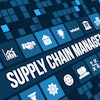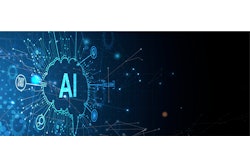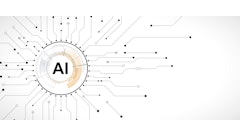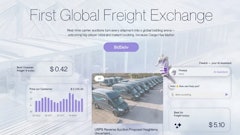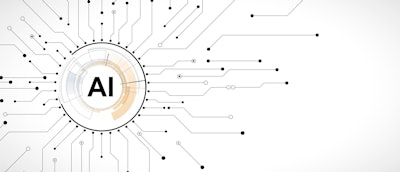
Executives, over the last few years, have strived to identify practical and high-impact use cases for artificial intelligence. Procurement has established itself as a critical business function and one that is ripe for AI-driven transformation. The pace and velocity of business change is faster than ever. Procurement teams are facing economic uncertainty, shifting geopolitical and regulatory landscapes, and technological changes at a breakneck speed. And it’s not slowing down. AI is increasingly recognized as a way to help teams pivot vs. panic.
From enhancing agility and compliance to boosting productivity, procurement stands to benefit greatly through intelligent automation and AI. Areas like cost management, real-time market intelligence, contract analysis, and supplier performance evaluation can be managed more quickly and accurately, benefiting both procurement team members and the broader business. This appetite for AI assistance is growing, too. In a recent study sponsored by SAP, Economist Impact found that AI proficiency is the top skill organizations plan to prioritize over the next 12-18 months.
However, before organizations can realize the full promise of AI, they must do more than just adopt the technology. Having robust datasets, technology integration, and workforce management strategies in place will be vital to ensure accuracy, effectiveness, and regulatory compliance of any AI tools.
Changing expectations require skills change
Procurement has become increasingly strategic and has developed more collaborative relationships across the business. Yet a critical skills gap remains: Fewer than 10% of organizations are prioritizing change management skills in their short- and medium-term talent strategies.
This is not a new challenge, as 34% of businesses identified change management as the top barrier for digital transformation in 2023. As AI becomes more embedded in operations, this has raised the bar for procurement to identify the right talent.
Workforce churn further compounds this challenge. Gallup estimates that replacing leaders and managers can cost up to 200% of their salary. Considering that it takes months to get new hires up to speed, high turnover rates can kill the momentum of unprepared organizations. Economic realities, like hiring freezes, workforce right-sizing, and macroeconomic uncertainty, create more pressure, leading companies toward external labor to mitigate capacity constraints and supplement skill availability.
To succeed in the long term, organizations must develop holistic talent ecosystems that provide visibility, flexibility, resilience, and increased productivity. Expanding employee networks, orchestrating the movement of talent, and providing training resources can foster innovation and equip procurement teams with the resources needed to adapt to change.
Real-time risk simulation and signal detection
Risk is an ever-present concern in today’s volatile global environment. Supply chain reconfigurations driven by geopolitical instability and regional conflicts were cited by 64% of Economist Impact survey respondents, ranking as the top organizational risk over the next 12-18 months. Equipped with AI tools, such as those that help predict and respond to tariff increases, leaders are growing more confident in their ability to manage this uncertainty.
Whether that uncertainty is based on supplier solvency or a natural disaster, AI can help assess potential impacts on cost, delivery time, and availability. And before any of this happens, it can model alternate paths and generate risk scores for suppliers based on the geopolitical, environmental, and financial risks to enable procurement to take a proactive approach.
While cost savings have long been the traditional indicator of success, many CFOs are pushing procurement teams to prioritize other areas, including sustainability (62%), AI strategy and integration (41%), and supply chain reconfiguration (37%) over cost management (17%) in the next 3-5 years.
This evolution highlights the need for procurement to further align with broader C-suite priorities, moving beyond cost control and using AI in a way that can assist with regulatory, technological, and geopolitical challenges. AI makes it easier to reconfigure supply chains and keep pace with those pressures.
As an example, wildfires could drive rising demand for air purifiers as smoke moves into different regions. AI platforms can alert procurement about a potential impact before orders increase, so they can collaborate with suppliers and proactively react to keep up with surging demand.
Administrative automation and performance monitoring
Long-held tasks like drafting contracts, monitoring regional compliance, and tabulating performance against key goals are the backbone of successful procurement. These tasks are also prime candidates for AI-related reinvention that will free up team members’ time to focus on more pressing challenges. The top AI benefits companies have seen include contract management (31%), productivity and efficiency (30%), and source to contract process automation (29%).
With natural language processing, AI can review, draft, and extract key terms, clauses, and obligations from contracts, while checking against internal policies and regulations to ensure compliance. For example, it might detect a clause that exposes the company to risk under trade laws and flag it for legal review. Or if a certain contractual condition is met, AI can automatically execute the next steps to ensure compliance.
For procurement teams, these contracts are also important for monitoring supplier performance. AI can help teams log late deliveries or quality issues and automatically update supplier scorecards. Informed by shipment data, third-party information, or quality control reports, AI can track if a supplier’s metrics drop below an agreed-upon threshold and suggest corrective action.
What’s next
The next frontier in procurement innovation lies in autonomous systems — AI tools that not only execute tasks but also understand business logic and continuously learn from experience. However, many companies still struggle with siloed and fragmented data.
To unlock AI’s full potential, organizations must streamline their applications and unify data. This will enable more powerful insights and faster implementation. For example, by leveraging a comprehensive business suite that offers solutions across departments, procurement teams can access insights from across the organization, identifying potential risks earlier and improving supplier collaboration.
Applications such as agentic AI will drive further transformation. These tools can handle a wide range of tasks, from sourcing and quoting to inventory orchestration, while empowering end users to choose the best course of action.
Over time, these AI systems will learn critical business context, enabling them to make increasingly informed decisions. Little by little, the procurement function will begin to reap the rewards of AI and move closer to automation and orchestration of tactical processes, freeing up critical resources to address the productivity risks faced today.



